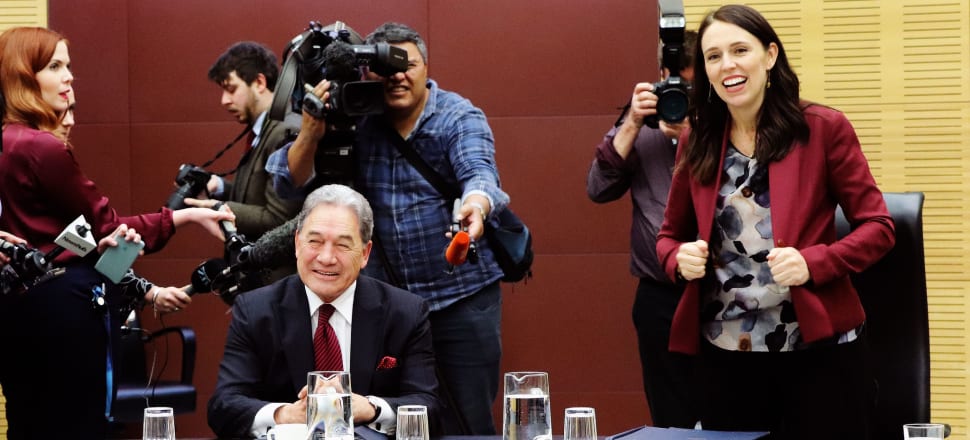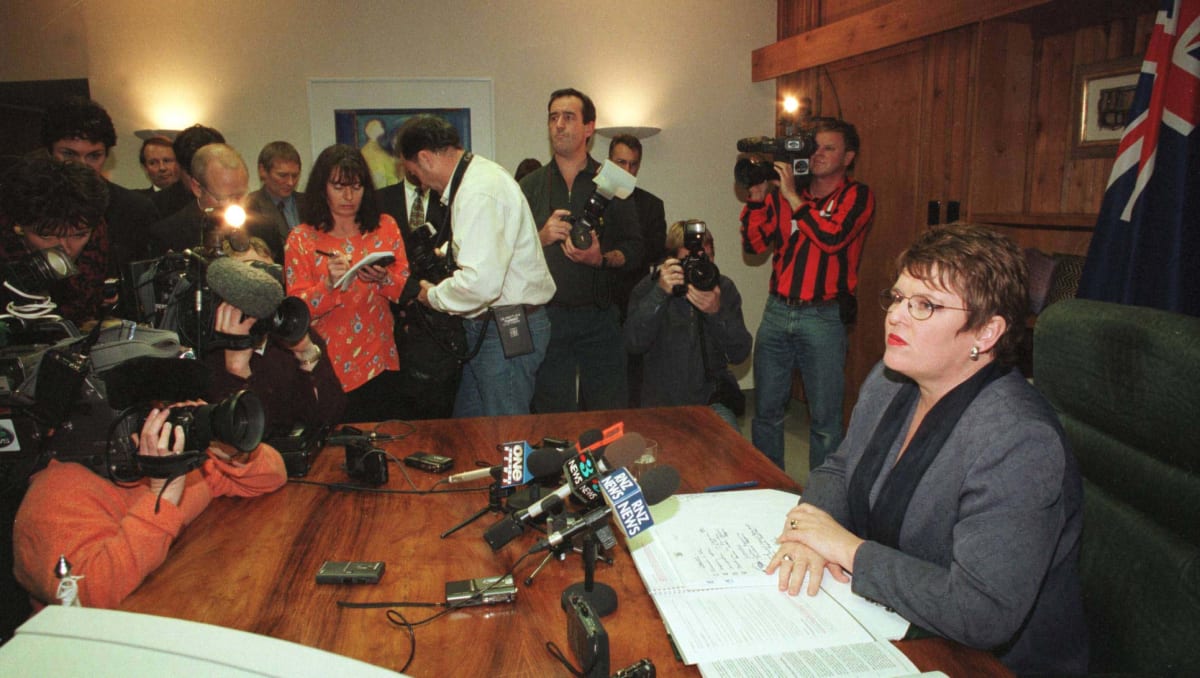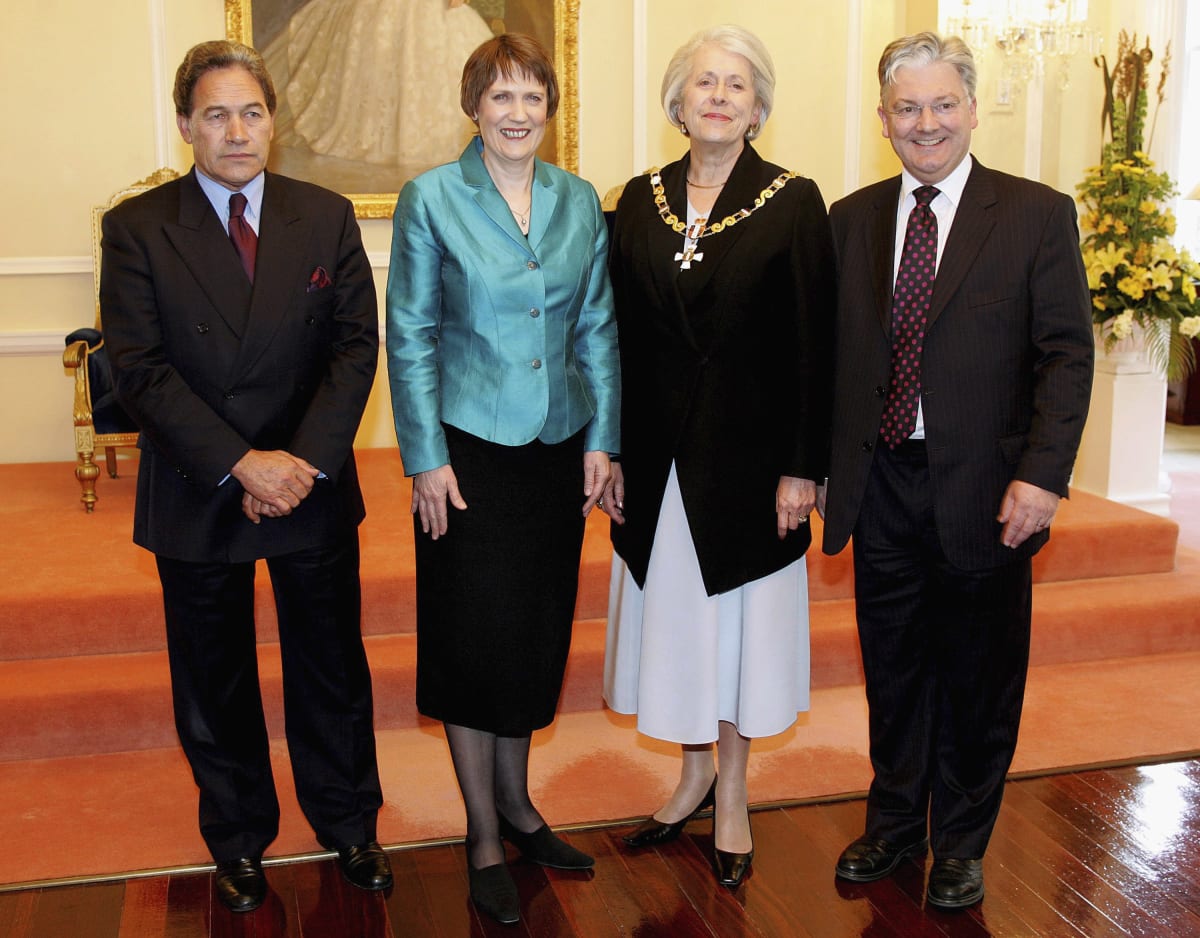
Winston Peters and NZ First have been in coalition governments three times since 1996 and three times they've ended in suspicion, controversy or bad blood. Tim Murphy reports.
"Marriage is the triumph of imagination over intelligence. Second marriage is the triumph of hope over experience." – Oscar Wilde
Analysis: Will National get hitched again to New Zealand First, 25 years after their first acrimonious breakup and after both parties have hooked up with others proudly and at times messily during that time?
NZ First divorced that National government in 1998 after Jim Bolger was replaced by Jenny Shipley as Prime Minister.
It linked with Helen Clark's Labour in 2005 but the relationship ebbed, with a temporary separation, ahead of the election of 2008 sending both parties out of office and NZ First out of Parliament after 15 continuous years in the House.
READ MORE: * Winston Peters returns to right ‘an upside-down world’ * Peters writes his own history on backing Labour in 2017
And then in 2017, NZ First got together with Jacinda Ardern's Labour to end the National government of Bill English, before Peters turned on the red team rhetorically in the lead-up to the 2020 election and his party was again removed from Parliament.
Neither National nor Labour have fallen out, publicly at least, with any of their other coalition partners over the past 27 years of MMP, during terms in office together. They've variously stayed on side with Act, United Future, the Greens, the Māori Party, even early MMP pick-up teams like the Mauri Pacific party, Future NZ, the Conservative Party and Christian Democrats.
When there's been fallout, suspicion or bad blood, there's been one common element. You have one guess.
The current National leader Christopher Luxon, having said this week that he would pick up the phone to Peters after the election should NZ First's votes be needed to oust the Labour Government, must have his eyes wide open to that record.
His comments explaining his openness to NZ First are hardly positive, noting his clear preference is for someone else (Act) and that calling Peters would be his least favoured option, his last resort. On Wednesday night's Newshub debate he went further: "I don't know him and I don't want to work with him, unless I have to."

Here's a brief summary of NZ First's previous relationships and breakups:
NZ First's first time in government and first spectacular fallout
Peters had already left a government before MMP was even a thing, being removed from the Bolger National Cabinet in which he had been Māori Affairs Minister in 1991after criticising his own government's economic policy. He spent just 334 days as a minister. Peters walked from the National Party as well in 1993, resigning from Parliament to first win a byelection in Tauranga as an independent and then forming NZ First. In both instances he argued it was on principle. Others suspected petulance or ego might have played a part.
When NZ First won 17 seats in the first MMP election of October 12, 1996, NZ First strung out coalition talks until December 10, finally opting to go into government with Bolger's National. Peters was made Deputy Prime Minister and Treasurer, a role created for him but with Sir William Birch being the actual Minister of Finance.
After Bolger was rolled by Jenny Shipley in 1997, the two parties' relationship soured to the point Shipley sacked Peters from the Cabinet in 1998 (sacking number two) and Peters and his MPs walked out of government. Peters managed 612 days in office this time. Some of his former party colleagues, however, led by minister Tau Henare formed a breakaway group of independents, later named Mauri Pacific, and kept National in power until the 1999 election.

At that poll, NZ First won just five seats, down from 17 in 1996, recording just 4.19 percent of the party vote and making it back to Parliament by Peters holding his Tauranga seat by only 63 votes. Mauri Pacific won no seats, and Labour under Helen Clark took office alongside Jim Anderton's Alliance and the two seats won by the Green Party.
Second chance in government
Clark won again in 2002 but in 2005 needed a partner party to hold off Don Brash's National and form a government. NZ First had slipped from 13 seats in 2002 to just seven, managing to exceed the threshold with 5.7 percent.
Peters was made Foreign Minister and Clark has since said the pair worked professionally through their time in government. He did not complete his term, however, standing down on August 29, 2008 after a high-stakes meeting with Clark, while a Serious Fraud Office inquiry was conducted into allegations against NZ First over donations.
Peters also appeared before Parliament's Privileges Committee over a donation from Sir Owen Glenn. The committee recommended he be censured for "knowingly providing false or misleading information on a return of pecuniary interests" and Parliament passed a motion censuring Peters on September 23, 2008.
National, the Greens, the Maori Party, Act, United Future and two independent MPs supported the censure motion. Labour and NZ First opposed it.
Clark took on the role of foreign minister herself and Peters did not return to the portfolio before the November 8 election in which John Key's National Party swept to power and NZ First was ejected from Parliament.
That SFO inquiry later ended with no charges. Peters claimed in 2011 the allegations and inquiries against his party were "the most vicious character assassination seen in any campaign this country has ever witnessed".

Back with Labour, the handbrake and rejection
After nine years of the Key/Bill English National administration, NZ First won enough seats in the 2017 election, nine from its 7 percent of the party vote, to force another round of coalition negotiations pitting National against Labour. After nearly four weeks of hiatus, Peters announced he would go with Jacinda Ardern's Labour (which won 37 percent of the vote to National's 44.5) and formed a coalition government in which Labour had a separate governing arrangement with the Green Party.
This time, NZ First and (in a personal first) Peters lasted the distance, remaining in office as Foreign Affairs Minister until the 2020 election. However the governing relationship became tense as the election loomed, with Labour figures and others unhappy at the 'handbrake' effect of NZ First ruling out policies and Peters becoming increasingly critical of his partner party and, by implication, Ardern in stump speeches.
I reported on Peters' attacks on Labour at the time for Newsroom: "He increasingly felt emboldened to dump on Labour, its inexperience, lack of business nous, light rail plan, flawed Covid-19 response, big spending promises, its Matariki public holiday proposal and its plans to resolve the Ihumātao land dispute. An NZ First press statement on Peters' speech about Ihumātao even described his comments as 'blistering' and was headlined 'Peters unleashes on Labour.'
"While Ardern smiled and shrugged it all off as election season politicking, it looks increasingly likely the public was not so easygoing about Peters and NZ First white-anting the historically popular Prime Minister."
None of that mattered to Labour or the Prime Minister in the end, winning an historic victory with a majority of the party vote under MMP – in what was seen as a verdict on the Government's Covid-19 response. New Zealand First won just 2.6 percent of the party vote, zero seats and was once again ejected from Parliament.
So now to the October 14 election
NZ First goes into this election back above the 5 percent threshold in a number of polls and that was what led to Luxon's public statement that he would call Peters for support, if he needed it to stop a Labour-Greens-Te Pāti Māori government.
Peters has added new causes and candidates this time around – from anti-vax/mandate campaigners to someone from Hobson's Pledge and its one-law-for-all, and issues ranging from opposing trans people using women's toilets, to querying regulations on therapeutic medicines.
A National-Act-New Zealand First coalition is not the preference of Luxon, his campaign manager MP Chris Bishop or of Act leader David Seymour. Their statements have had a peg-on-the-nose tone to them, an 'if-we-have-to' exasperation.
Guyon Espiner, the RNZ investigations journalist and former 1 News political editor and Morning Report host perhaps sums up the cyclical nature of the NZ First and Peters phenomenon best:
"It's like the New Zealand electorate goes one circuit around the goldfish bowl and then utterly forgets where they were. 'Oh, this guy was great. Look at his smile'."








